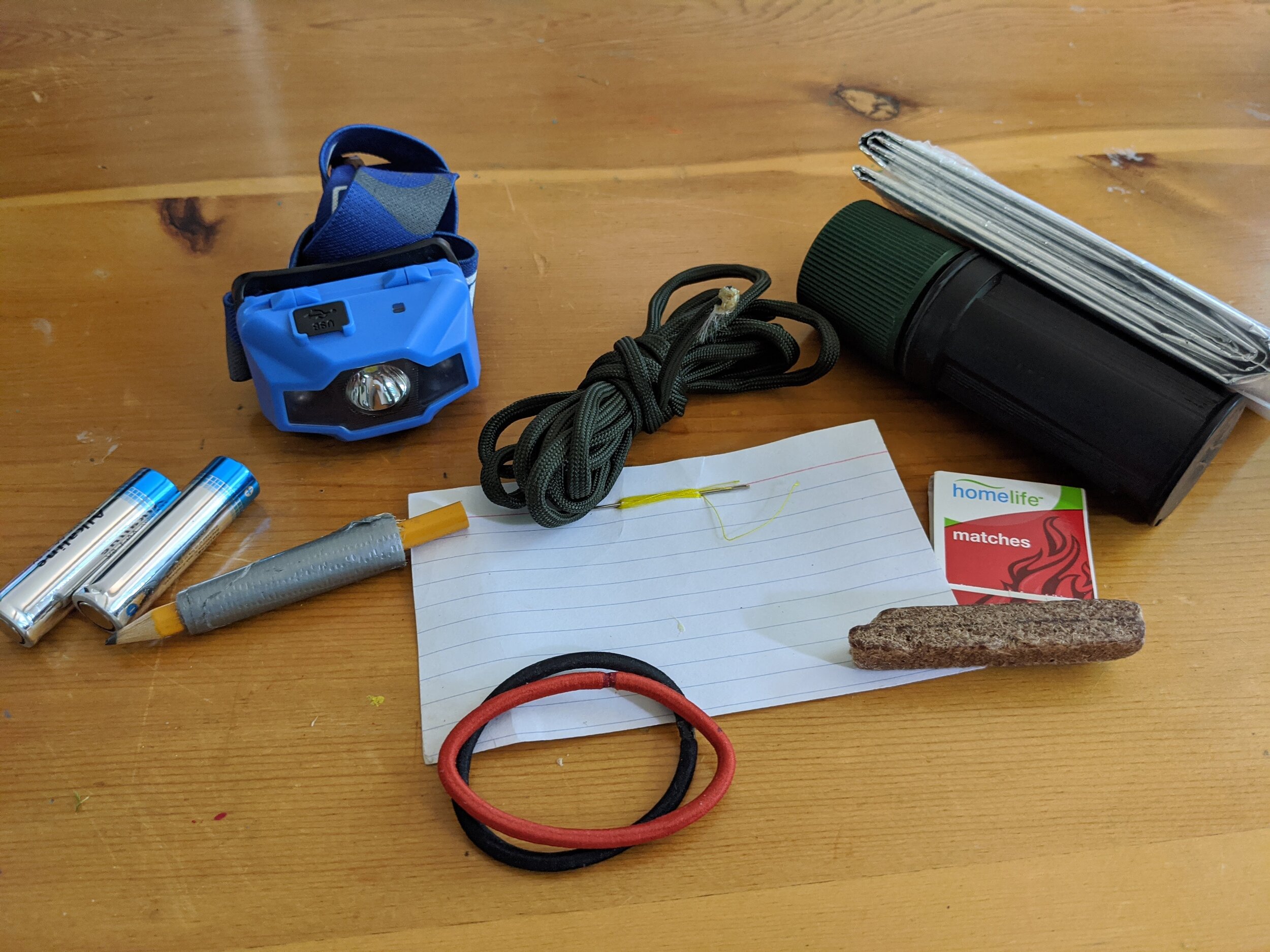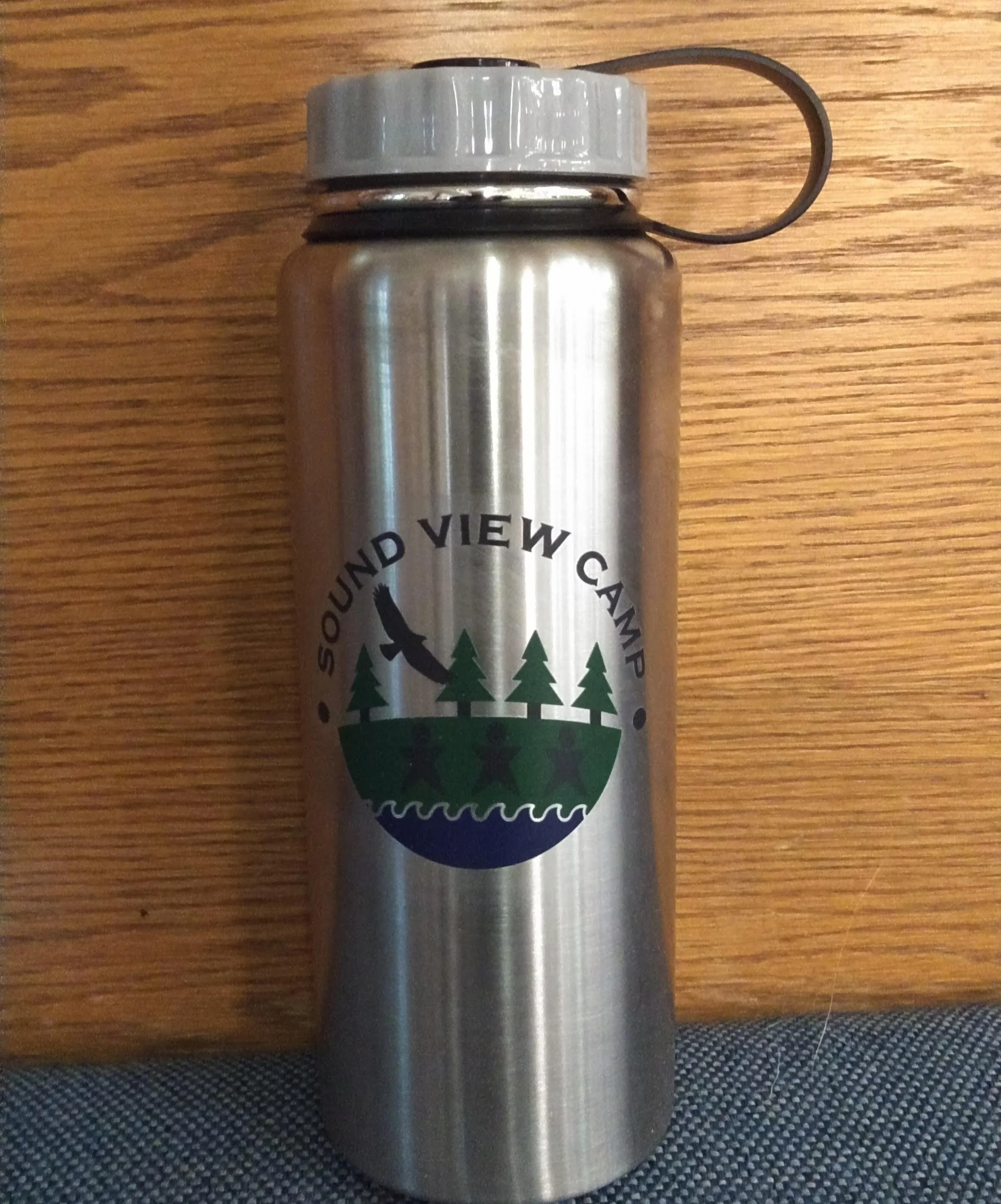10 Essentials for Outdoor Adventuring
/Many are looking forward to the outdoor adventures they will get to have once they are able to again. Whether you are looking forward to camping, hiking, or backpacking, you can start preparing for your adventure now by making (or making a plan for) your 10 essential sets of items. The 10 essentials are items that are fantastic to have with you whenever you spend time outdoors. They help you stay prepared for emergencies, weather changes, staying out longer than you thought you were going to, and more. This is also an excellent way to follow the first Leave No Trace guideline: “Plan Ahead and Prepare.” Read more about Leave No Trace here: http://www.soundviewcamp.com/nature-blog/2020/4/3/leave-no-trace
The 10 essential sets of items include: navigation, source of light, sun protection, first aid kit, repair kit/tools, extra clothes, fire kit, shelter, extra food, and extra water. Though you may not need all of these thing on every hike, the one time you might, you will be glad you have them. You never know when that one time will be, so it is a great idea to have your 10 essentials for every adventure.
1. Navigation
Part of planning ahead is learning about the area you plan to explore. This involves getting a map of the area in which you are hiking or camping. While using your phone or a GPS can be fun and helpful, you do not want to rely on them in an emergency because the battery could run out or it could lose signal. Therefore, before you leave, familiarize yourself with the map and the path you plan to follow. Another great navigational tool is a compass. Make sure you learn how to use the compass before bringing it on your trip! Maps and compasses work best together.
2. Source of Light
A flashlight or a headlamp are great portable sources of light. Even if you are hiking during the middle of the day, it is a good idea to bring one of these sources of light so if you spend more time outside than you were planning, like if you get lost or someone gets hurt, you will be prepared to see in the dark. They can also be used to get someone’s attention in case of an emergency. Always be sure you have a working extra set of batteries for your light source. Headlamps give you the advantage of having your hands free when you are using it.
3. Sun Protection
Even on a cloudy day, you can get a sunburn. While sunshine offers many benefits, too much of it can be harmful to our bodies. Sun protection can take many forms: sunscreen, hat, sunglasses, and protective clothing. The best option is to use many of these things to protect your body from harmful effects of the sun. Remember to apply your sunscreen before heading out and to reapply every 2 hours.
A few of the things in my basic day hiking first aid kit
4. First Aid Kit
I have used my first aid kit many times on trail. Sometimes for myself, but more often to help fellow hikers on the trail. Depending on the length of your trip and the number of people coming with, you may need different things in your first aid kit. There are many pre-made kits you can get at the store. I always make sure to carry adhesive bandages of different sizes (band-aids), an elastic bandage (for wrapping hurt limbs), blister prevention supplies (mole skin, medical tape), tweezers (for splinters), and insect repellent (to prevent itchy bug bites). Make sure with your first aid kit, you bring a knowledge of how to use what is inside. It is a great idea to have someone trained in first aid with you when you hike!
5. Repair Kit/Tools
This will change based on what you are bringing with you. In general, it is a great idea to carry some duct tape and a multi-tool with scissors and a knife (with parent permission). I often will wrap a few layers of duct tape around a pencil or my water bottle so I don’t have to bring a full roll. You may also want a patch kit for your rain gear or tent if you are on an overnight trip. String is also a helpful repair item. If you bring the right string, it can help start a fire as well.
My headlamp and batteries for source of light. String, needle and thread, hair ties, and duct tape for my repair kit. Matches, water-proof container and a fire starter for my fire kit. An emergency blanket for my shelter.
6. Fire Kit
Just like your first aid kit and compass should also include knowledge of how to use it, you should be familiar with starting a safe, controlled fire before using a fire kit. Otherwise, you can make sure an adult coming with you has a fire kit with them. Check out our lesson on fire building here: http://www.soundviewcamp.com/nature-blog/2020/4/8/fire-building In you fire kit, you should have matches in a water-proof container, and some supplies to use as dry tinder. Fires provide light and warmth in case of emergencies. Make sure to follow the “Minimize Fire Impacts” Leave No Trace principle anytime you have a fire.
7. Extra Clothes
Weather can be unpredictable. Even with a low chance of rain for the day, you may find yourself out in the rain or in some more wind than you expected. For this reason, always bring some extra clothes to protect you from the elements. Hats, gloves, and an extra clothing layer are all great things to have with you. A waterproof layer can not only keep you dry but also protect you from the wind and keep you a little warmer.
8. Shelter
This one will look different based on the type of trip you are taking. If you are camping or backpacking your shelter will be the tent that you are taking with you. For a day hike, bringing a light weight emergency blanket or a bivy sack, maybe helpful in case you get lost or stuck longer than you were expecting.
9. Extra Food
When I go on a day hike, I enjoy eating lunch on the trail. My lunch however does not count as my extra food for my 10 essentials. On top of what I bring for lunch, I pack some extra nutrition just in case I am on trail longer than I expect. This food is generally something high in protein so it will stick with me a while. Energy bar, trail mix, and jerky are all good options because they are not too heavy and do not require refrigeration or cooking.
10. Extra Water
Staying hydrated effects your whole outdoor experience. Drinking enough water prevents headaches, cramps, grumpiness and more. Because you are being active, you may need more water than you typically drink in a day. How much water you need changes depending on the season. When it is hot out, your body loses water faster and you need to drink more to replace it. Make sure you always bring more water than you will need. For hikes more than 2 hrs, I usually carry 2 full 32oz water bottles but water requirements for everyone are a little different. If you are going on a long overnight or multi-night trip, you may need a water purifier to replenish your water supply.
The 10 essentials offer great guidelines for what to pack on your trip. If you have some of these things lying around the house, you can practice carrying them on neighborhood walks. You can also split many of these things up among your adventuring group, like the first aid kid, repair kit, fire kit, navigation, and shelter. Make sure you talk with your adventure group about these things while planning your trip! Learn more about the 10 essentials here: https://www.nps.gov/articles/10essentials.htm







